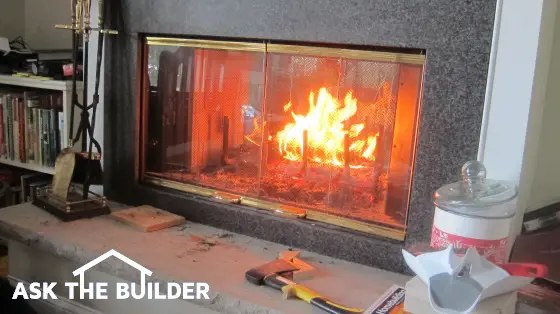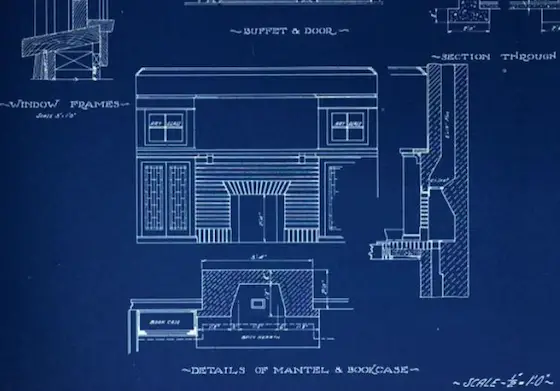Fireplace and Woodstove Chimney Safety

Fireplace and Woodstove Chimney Safety | Here’s a roaring wood fire in my own fireplace. How do you think I keep my family safe? Copyright 2021 Tim Carter
It’s that time of year here in the USA where you might be starting an indoor fire to either stay warm or just produce some ambiance within your home. I happen to have two wood-burning fireplaces in my own home and both are see-through so four rooms in my house get the benefit of a roaring fire.
How Many Indoor Fires Are Caused By Fireplaces or Woodstoves?
I don’t know about you, but I’m curious as to the number of residential fires that occur because of something gone wrong when an indoor fire is stoked in a fireplace or a woodstove. I decided to head to the Consumer Product Safety Commission and the National Fire Protection Agency for some data. I wasn’t disappointed in my findings.
How Many Chimney Fires a Day in the USA?
It turns out the data is slightly stale as both agencies offer up data from a few years ago. That said, I feel it’s a great reflection of what happens now in every state in the USA. It turns out there are well over 10,000 residential fires each year in the USA that are traced to fireplaces, chimneys, and woodstoves. Depending on your source of information, it equates to about 40 fires per day. That’s over one per hour each day. People like you die or are severely injured/burned in some of these fires.
Code-Approved Chimney Story - True and Scary
These numbers should put your head on a swivel. If not, this story should. About twenty years ago, I was tasked with moving a wood-burning fireplace from one place inside a home to another. The original chimney was installed per the minimum code requirement in place in the 1980s.
What I discovered as I removed the drywall that was screwed to the wood furring strips that were nailed to the 4-inch solid concrete block astounded me. I could see soot and scorch marks where hot flu gases had worked their way through tiny cracks in the mortar surrounding some of the concrete block.
I decided to slow down my demolition efforts to carefully look at how the clay flue liners were installed. I could see that fresh mortar was used to connect them. The mortar looked to be in great shape. But there were many cracked flue liners!
I couldn’t see any evidence of house settlement and all the masonry in the house looked good. I assumed the foundations under the chimneys were in good shape and had never moved causing stress on the flue liners. The cracks must have been caused by hot fires. I asked the homeowner about this and he said he would get fires going as fast as possible. I can’t prove it, but I assumed the fires got too hot too fast and the flue liners didn’t have a chance to slowly heat up. The thermal shock, especially on cold winter days and nights when the flue liners would be quite cold most likely caused them to crack.
The shocking thing is that the flue gases had escaped from the chimney and could have set the wood framing near the chimney and the wood furring strips on fire. Fortunately for this homeowner, a fire never occurred.
Was the Chimney Built to Code?
It’s important to realize this chimney had been built to the minimum standards allowed by the building code at the time the house was built. My takeaway, and it should be yours too, is wood-burning fireplace chimneys should be constructed much better than the code requires.
Do You Know a Master Mason?
I’ve had the luxury in my career to employ a master mason, John Hoeh, who built all the wood-burning fireplaces and chimneys on my jobs. It’s tantalizing to watch him skillfully use a thin coating of wet fire clay to create a fireproof joint between firebrick in fireplaces. It’s comforting to see him surround flue liners with 8 inches, or more, of solid masonry.
What is Solid Masonry?
What does solid masonry mean? To me, John, and many other craftsmen, it means that the space between the outside surface of the flue liner and the outside surface of the chimney itself is completely solid. There are no air gaps, no void spaces, and no pathways for hot flue gases to escape from the chimney.
Lots of mortar, masonry rubble, solid concrete block, solid brick, solid rock, or whatever solid masonry material available is used to create this barrier. It takes a bit more time to do this, but the long-term peace of mind is worth every penny.
The Building Code is a Set of MINIMUM Standards
I’ve said in many past columns of mine that the building code is a set of minimum standards. I’ve never had a building inspector nor building official disagree with me. Building anything to the code standard is like getting a 70 percent on a test. It means you just barely passed. You can always build things better than what the building code mandates. Never ever forget that.
Keep in mind there’s much more you need to know about building fireplaces and chimneys. The actual firebox needs to be a very specific shape and size so it doesn’t smoke.

This blueprint is nearly 100 years old. The architect knew EXACTLY how to design the fireplace, chimney, and firebox so it would NOT SMOKE. Use this as your North Star.
Once the last brick or stone is laid at the top of the chimney, it needs the correct cap so the chimney lasts for hundreds of years. Based on my observations of chimneys I’ve inspected, I’d say that not one in 10,000 has the type of chimney cap the Brick Industry Association recommends.
How Important are Chimney Caps & Crowns?
My AsktheBuilder website and discover illustrations of how your firebox should be built. I have a table of all the required dimensions. I have several past columns that go into great detail about how chimney caps & crowns, the roof of your chimney, should be built. Go get this FREE information now!
Column 1430